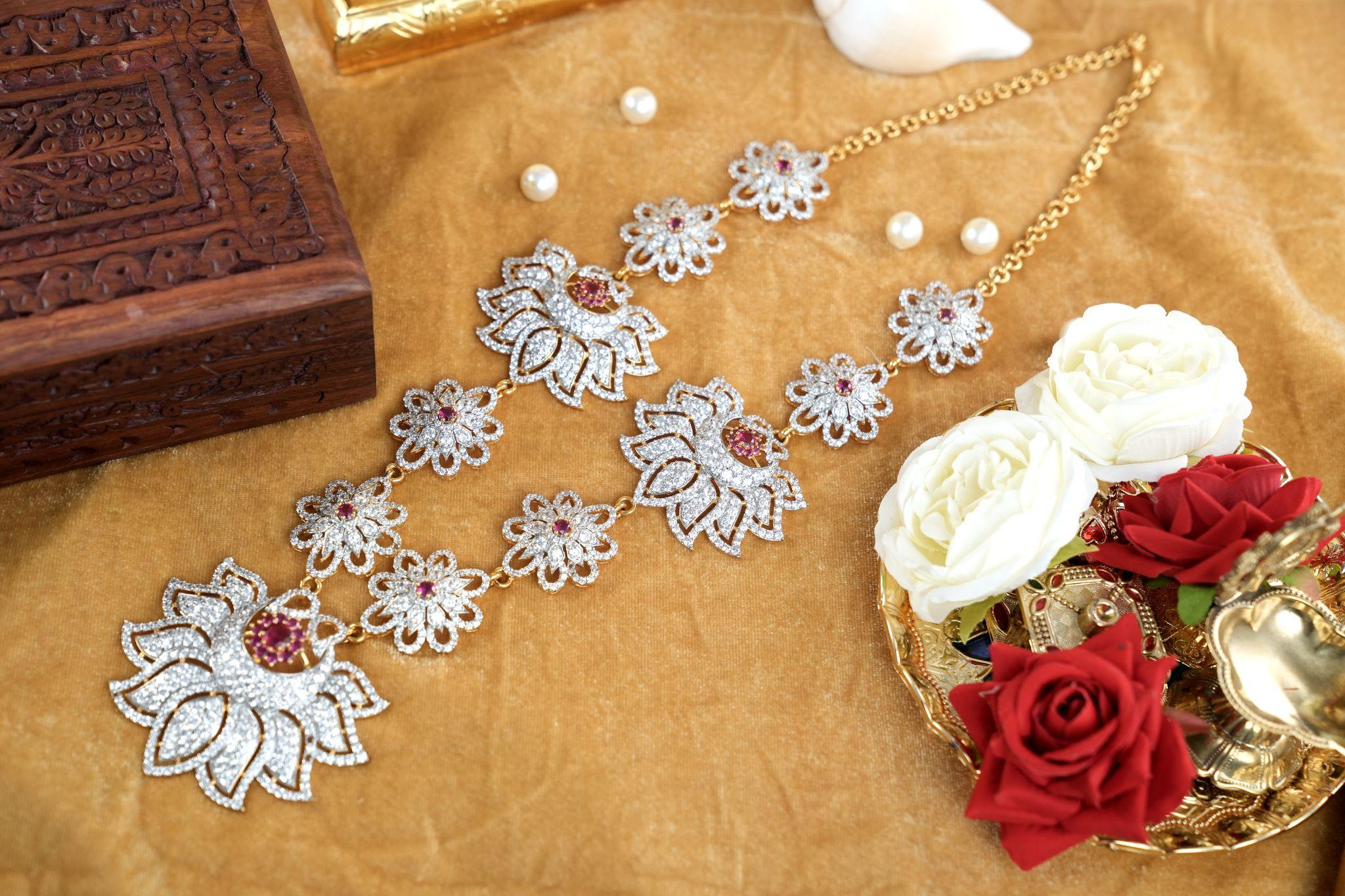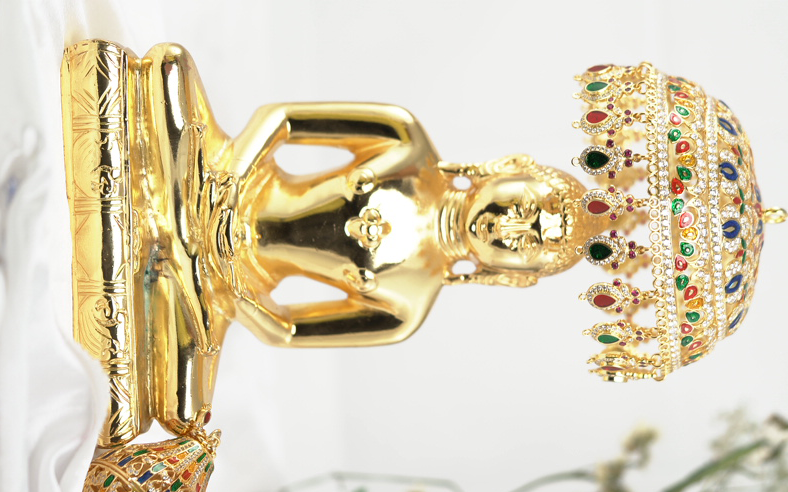Table of Contents
- Introduction
- The Cultural Significance of Jain Ornaments
- Haar: A Sacred Garland Symbolizing Purity
- Chhatra: The Divine Umbrella of Protection and Respect
- Kamalji: The Lotus as a Symbol of Enlightenment
- How Meru Divines Upholds Tradition and Quality
- SEO Optimization Applied
- Conclusion
- Explore Jain Ornaments at Meru Divines
Introduction
Jainism puts a strong focus on simplicity, purity, and spirituality. Every aspect of Jain religious traditions reflects these principles, including the ornaments used to decorate statues and temples. Jain temple decorations such as Haar, Chhatra, and Kamalji are more than just decorative artifacts; they represent deep spiritual connotations and contribute to the purity of worship.
In this extensive study, we will look at the cultural and spiritual significance of these major ornaments, as well as how they relate to Jainism's beliefs.
The Cultural Significance of Jain Ornaments
In Jain culture, temple ornaments reflect a blend of artistry and spirituality. They are designed to adorn idols (Pratimaji) in temples, symbolizing the soul's journey toward liberation (Moksha). These ornaments embody devotion, reverence, protection, and enlightenment, inspiring devotees to walk the path of righteousness.
Jain ornaments are crafted with precision, often using pure silver with gold plating, anti-tarnish coatings, and embedded with CZ stones for durability and elegance. The use of such high-quality materials signifies the importance of purity and longevity in spiritual practices.
Cultural Significance of Jain Ornaments
Temple decorations in Jain culture combine artistic and spiritual elements. They are intended to embellish idols (Pratimaji) in temples, representing the soul's journey to freedom (Moksha). These decorations represent dedication, reverence, protection, and enlightenment, encouraging followers to follow the path of virtue.
Jain decorations are meticulously created, often employing pure silver with gold plating, anti-tarnish coatings, and inset CZ stones for durability and elegance. The use of such high-quality materials emphasizes the value of purity and durability in spiritual activities.
Haar: a sacred garland that symbolizes purity.
The Haar (necklace) is a vital decoration in Jain temples, representing dedication, oneness, and spiritual purity. It symbolizes the expression of love and adoration to the god.

Symbolism: The garland serves as a reminder to remain pure and separate from material demands, much as flowers in a garland are joined while retaining their uniqueness.
Design Elements: Haar designs at Meru Divines feature silver-crafted elements with beautiful workmanship. Some are adorned with gold plating and CZ stone decorations, displaying the radiance of heavenly light.
Offering a Haar represents spiritual surrender and unification of the devotee's ideas with heavenly energy.
Chhatra, the Divine Umbrella of Protection and Respect.
In Jainism, the Chhatra (canopy) is a revered emblem of protection, authority, and regard. It is usually put over statues to signify the deity's higher spiritual stature as well as supernatural benefits that protect believers from ignorance.

Spiritual Meaning: The Chhatra represents the protecting and illuminating aspects of spiritual enlightenment. It represents protection from worldly illusions and helps devotees stay focused on the road to nirvana.
Craftsmanship at Meru Divines: The Silver Chhatra line has carefully made items intended to enhance the sacredness of religious interiors. The goods combine ancient themes with modern craftsmanship, appealing to both devotees and temple custodians.
Kamalji: The Lotus as an Enlightenment Symbol
In Jainism, the lotus, or Kamalji, is highly symbolic of detachment, purity, and spiritual awakening. The lotus symbolizes the capacity to exist in the material world unimpaired by it, just as it grows in murky water and stays pure.
Meaning in Worship: The lotus represents the soul's ascent over ignorance to blossom into complete consciousness on its path to enlightenment.
At Meru Divines, Kamalji: Discover gorgeous lotus-inspired patterns that elevate temple altars by perusing the Kamalji collection. The exquisite craftsmanship of these silver jewelry reflects inner awakening and divine grace.
How Meru Divines Preserves Customs and Excellence
The mission of Meru Divines is to uphold and enrich the heritage of Jain temple adornment. The brand ensures that every piece represents the highest standards of excellence by fusing new innovation with traditional craftsmanship.
Materials Used: To guarantee longevity and a brilliant sheen, Meru Divines uses Italian rhodium coatings, 22kt gold plating, and 925 silver.
CZ stones and anti-tarnish coatings: The ornaments' durability is guaranteed by the use of CZ stones graded at Category AAAAA and anti-tarnish coatings.
Optional and Ready-to-Sell Items: With more than 25 years of experience, Meru Divines serves both temples and lone worshippers, providing both ready-to-sell and personalized ornaments.
In summary
The capacity of Jain jewelry to combine beauty with deep spiritual meanings is what gives them their attractiveness. Every piece, whether it's a Chhatra, Haar, or Kamalji, acts as a symbol of protection, awareness, and purity. Meru Divines upholds this custom with superb workmanship and a profound comprehension of Jain culture.
Whether you're looking for decorations for a temple Pratimaji or for personal devotion, Meru Divines' expertly made items provide the ideal balance of quality, innovation, and tradition.
Explore Jain Ornaments at Meru Divines
Browse through the latest offerings at Meru Divines:
- Haar Designs
- Chhatra Designs
- Kamalji Designs
Get exquisite temple jewelry from Meru Divines today to embrace the divine essence!